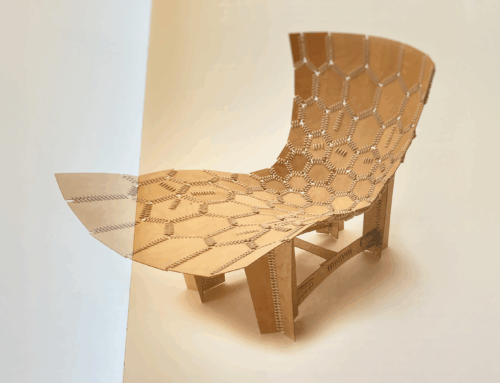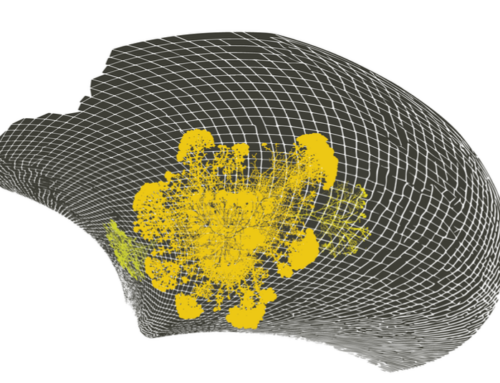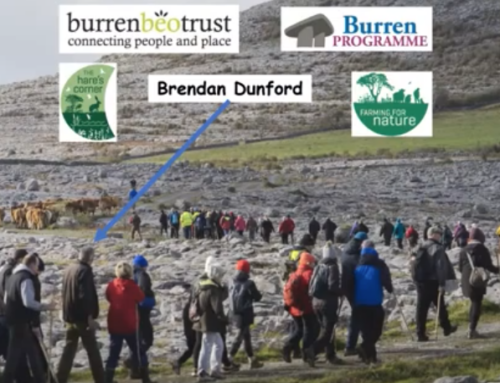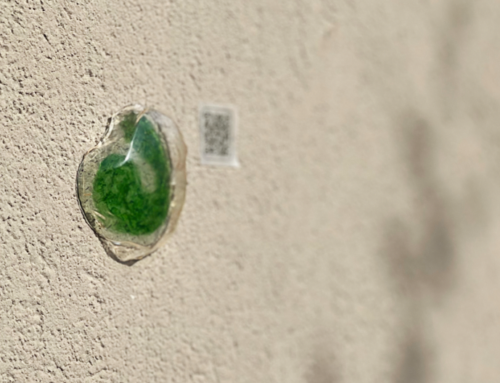SEPTEMBER 2016 Newsletter
Since my book How To Thrive In the Next Economy was published – a year ago this week – I’ve had conversations about it at forty talks and workshops. With thanks to my diverse but always generous hosts, this email is to share the 72 most interesting and cheering things that I learned along the way. …
VALUE
1 My talks proposed a simple theory of value: the health of living systems, including human ones, is paramount. Money and GDP are secondary indicators of progress, at best. Nobody disagreed. So that’s that sorted.
2 For the theologian Ina Praetorius, what’s emerging is a care-centered economy.
3 Dougald Hine says we’re in a shift from a transactional to a relational economy.
4 The Pope’s encyclical Laudato Si – with a target readership of 1.2 billion people – includes a whole chapter on ‘integral ecology’. Fritjof Capra celebrated the Pope’s systems thinking.
5 Encouraged by the above, my talk at Berkeley was entitled: From Biomedicine to Bioregion – The Geographies of a Care-Based Economy
REGENERATION
6 In a care-centered economy, restoring plant life and biodiversity is at least as high a priority as changing our energy system, or reigning in the banks.
7 John Liu has demonstrated that large-scale ecological restoration is possible.
8 A ‘National Ecological Rescue Plan‘ features prominently in the programme of Podemos in Spain.
9 The European Union (which speaks in many voices, it’s true) supports High Nature Value (HNV) farming
10 Scotland is already monitoring HNV Farming and Forestry Indicators.
11 Wales is legislating ‘a duty of care to future generations
12 Judith Schwartz wrote an excellent primer on the restoration of soil health
13 In California, Fibershed published this story (and a map) about climate-beneficial wool
14 In Bangalore – once known known as the ‘city of lakes’’ – the ecologist S. Vishwanath is working on the restoration of watersheds devastated by hyper-development.
15 Re-forestation – a sub-set of ecological restoration – should focus on biodiversity. Planting trees en masse – especially as as bio-energy crops – can badly damage ecosystems.
16 I met many people involved in wetlands restoration projects – such as this one: www.walthamstow-wetlands.org.uk
17 I learned a useful new word from this swamps community: Limnology. It means the study of inland waterways
18 Europe’s ‘low impact fishing’ communities have formed themselves into a platform
19 Ecosystem restoration creates jobs and business activity
20 Some of these jobs are in dam removal – which is booming.
21 Although soil restoration using plants and natural chemicals can achieve a lot, a good deal of heavy lifting will still be needed. In a talk to DEME, I suggested they stop calling themselves a dredging company and become global leaders in Land Repair.
22 I discovered a treasure trove of “good” green tech in the the Climate Tech Wiki
23 Ecological restoration, and regeneration, are not the same thing.
24 There’s also a difference between restoration ecology and ‘rewilding‘.
25 I learned from Regenesis that we need to “grow our capacity to think systemically and holistically about whole living systems and our role in living among them”
BIOREGIONS
26 The “Network Europe 21” agenda states that Europe should be organised as an “Interconnected Transnational Republic of Cities and Regions”
27 I proposed adding “Bio-” to the word region in a post called Bioregions: Notes on a design agenda
28 We then ran a two week course at Schumacher College, in South Devon, England, called Bioregionalism By Design.
29 A lot of “learning” about a place, it emerged, involves knowledge that already exists – but in overlooked professional archives. An inspiring example in South Devon were maps made by the West Country Rivers Trust to inform its watershed catchment planning.
30 Isabel Carlisle (a course leader on the Schumacher course) is setting up a bioregional learning centre to serve South Devon’s Dartia watershed. The West Country Rivers Trust is a partner, as are Devon Hedges (who also look after wildlife corridors). Carlisle is setting up a Keepers of the Place network
31 Later, in my talk at #earthtalks in Vienna, I argued that a Europe of Bioregions would be a strong counter-proposal to the ‘Europe of Fatherlands’ being proposed by the xenophobic right.
32 At a workshop called Back To The Land 2.0 with Chora Connection in Denmark, we invited project leaders to share their insights on what makes a living economy work in their bioregion.
33 The organic municipality of Lejre, we heard, is setting up a Farm Lab in an amazing building
34 Although the idea of an ‘organic municipality’ seems to be a first, one third of Swedish municipalities are ‘eco-municipalities‘
35 At HF Cold Hawaii, a Danish high school, lessons are rescheduled when the surf is up.
36 At a Stir To Action workshop in England, we discussed the need for a back-to-the-land cooperation platform.
37 After that worklshop, the Agroecology Land Trust made a to-do list of practical issues that need to be addressed: Access to land; Skills and training; Business and livelihoods; Communities and culture.
38 Truth be told, the words “Back to the Land” and “Bioregionalism” did not (yet) trigger an “ahah!” response. For one thing, the project pioneers who know most about the subject are already there – on the land. New concepts, visions, and plans are not, to put it mildly, a priority.
39 Project leaders do value meeting each other – but some complained of networking fatigue. They already have lots to do – and the work needed to choral a wide variety of stakeholders is relentless.
40 One conclusion: Stories about local projects are more usefully shared in that place than described, second-hand, in the city. With that in mind, plans for a Chora Connection Caravanserai are in the works. The idea is take subject experts to work with project pioneers on key challenges: financing, housing, legal barriers, new business models.
41 In big cities, amplifying the number and reach of grassroots projects takes structure, processes, commitment, and time. To this end, Tessy Britton’s Participatory City project will involve, from 2017, a ‘demonstration neighbourhood’ of 200-300,000 people. They will test out up to 1,000 ideas over a five year period.
42 In France, a book called Villages of the Future documents a state-of-the-art approach to community and place development in the Bourgogne region.
MAKING
43 Several people asked: How could I write a book with “Designing Tomorrow’s World Today” in its title and not include a chapter on ‘Making’? I sometimes quoted Ursula K. Le Guin (in The Lathe of Heaven): “Things don’t have purposes“. I also argued that if ‘production’ is not the purpose of life, then neither is it the purpose of a living economy.
44 Besides, we have too much stuff. Offsite storage has been the fastest-growing segment of US commercial real estate for 40 years running.
45 Dmitry Orlov takes a harder line than I do in his new book: “Unlike Gaia, which is an organism onto itself, the technosphere is a parasite upon the biosphere”
46 Many of my designer friends are excited by the promise of a circular economy. I irritated some of them with this quote: “Sociometabolically, 44 percent of a ‘circular economy’ is not available for recycling”.
47 Christian Arnsperger offered up a compromise. Circular economy effects work – but only under conditions of one per cent growth. We should therefore grow a “perma-circular economy“.
48 An enjoyable making task for a perma-circular economy: the hardware needed for next economy energy systems: The necessary tools and equipment will be “numerous, varied, small-scale, and interconnected”.
49 The Make Works platform is Scotland is an asset-based-place-based approach to making. It feels more significant than all those 3d printers and drones. “Make Works are factory finders” – and now you can be one, too.
50 In the long run, how we use and take care of things is just as important as making new stuff. Kate Fletcher’s important book Craft Of Use: Post-Growth Fashion frames design and use as a single whole, and documents the ways in people across three continents use their clothes.
PLATFORM COOPERATIVES
51 Michel Bauwens advocates a p2p economy in which equal partners steward common resources. A polycentric system of commons trusts would enable ecosystems to be stewarded both locally and globally.
52 This sounds hard, to put it mildly. But a tremendous buzz is growing around the notion of platform coops as the political and organisational means to enable such an economy to flourish.
53 For Trebor Sholz, who coined the term, the next step is to develop Platform Coops as “something like public utilities”.
54 Platform coops are not abstract models. They are ‘living beings’. Hence, they are infinitely diverse p2pfoundation.net/living-breathing-platforms
55 The difference between platform cooperativism, and the sharing-economy, is helpfully explained here by @jdaviescoates
FOLK HIGH SCHOOLS
56 If ecological restoration is indeed the “great work” of our time’ – then we need training centres in every bioregion.
57 I favour Folk High Schools for this role. They are in many ways an excellent model developed in the Nordic countries in the nineteenth century.
58 A social infrastructure complementary to Folk High Schools can be bioregional guilds – like this one in Cascadia.
59 We also need to reconnect with our places in festivals and biennials. I suggested, to a conference of biennial organisers, that “social and ecological systems can be stars of the show”
60 Overly-scientific climate communications have caused worldwide “story fatigue“. Artists have an urgent role to play in shifting our focus onto “intangible but meaning-making aspects of the problem”.
61 Soil Culture: Bringing the Arts Down to Earth is an inspiring example of what artists can do. http://www.resurgence.org/magazine/article4374-bringing-the-arts-down-to-earth.html The same is now involved in the ecological arts network Art.Earth
62 Another example of art enhancing place is Cateran’s Common Wealth. in Scotland. Clare Cooper curates a wide variety of arts, cultural and heritage activities to celebrate the common wealth of Big Tree Country.
63 Could your bioregion be a memership organisation? Hugh Dubberly developed an fresh and innovative Membership Engagement Platform for National Geographic (before, sadly, it changed hands).
CHANGE
64 Back in January I asked, “Are positive stories enough?” My conclusion, nine months later, is that grounded evidence of positive change is indeed a powerful antidote to the fear being whipped up by some politicians and their media.
65 To judge by project birth-rates, the next economy is emerging faster than a year ago, too. Someone showed me a map that lists 862 projects in the Marseille region alone.
66 If dversity is another indicator of ecosystem health, then the proliferation of new social and economic models is also cheering. The Real Economy Lab, which I saw launched in Bristol, documents 400 examples. They are helpfully divided up into Tribes, and Themes.
67 The search for a dividing line between ‘before’ and ‘after’ (or “Left” and “Right”) is probably misguided. As stated by the Communard Manifesto, “The new world will be born and affirmed inside the old”.
68 The best book I received this year is Lean Logic: Dictionary Of he Future and How to Survive It. I have never made this promise before – but if you buy this book, you will not regret it.
69 There was broad agreement on my travels that climate change will not be ‘defeated’ by a) wars b) utopias or c) sentences that include the words “we must” or “they must”
70 Otherwise stated: “Another world is possible” (Arundhati Roy) was a good story. “Another world is happening” is a better one.
NARRATOLOGY
71 I’ve been a writer and storyteller all my life but I never heard the word “narratology” until the military got involved.
72 I guess that means I am a Narratologist for hire




